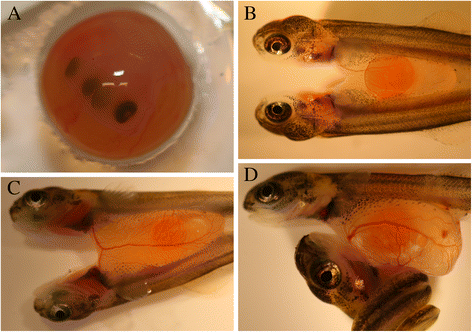
BMC Public Health: Eliminating vices
Quitting smoking is a challenge, and often alcohol consumption can interfere with smoking cessation efforts. In an English cross-sectional survey, researchers found that people who reported attempts to quit smoking in the previous week had also made efforts to reduce drinking in the same time period. The study could not conclude whether one decision was causative toward the other; however, the findings are indicative that policy and support programs should factor in individuals who may be looking to curb more than one addictive or health-related behavior.
BMC Genetics: Updating the model of hybridogenesis in water frogs
The Pelophylax esculentus water frog is one example of a hybridogenetic animal. In this mode of reproduction, the full genome of one parent is excluded from the germline of hybrid animals during development of the germ cells. This differs from typical sexual reproduction, in which the germline consists of recombined genetic material from both parents. Performing comparative genomic hybridization analysis over a time-course of meiotic stages, a recent BMC Genetics article proposes a new model for the cellular mechanism of hybridogenesis, suggesting that genomic exclusion can occur later into the process of meiosis than previously expected.
Image of the month: Four eyes

Researchers identified rare conjoined twins in salmon by screening for eggs with four eyes. Conjoined twins that shared yolk sacs also had interconnected cardiovascular systems. This BMC Developmental Biology article details the anatomical and histological characteristics of the shared systems and presents these fish as a potential animal model for cardiovascular development in conjoined twins – in part due to the easy accessibility of the transparent yolk sacs.
BMC Public Health: Birth records suggest early risk factors for obesity
Evidence exists that both genetic and environmental factors can lead to obesity, and development of robust intervention strategies has remained a major challenge. Using birth records from Massachusetts from 1980-2008, this study in BMC Public Health proposes that one environmental factor may be structure of the family unit: the study found that missing paternal data on birth certificates was correlated with childhood obesity risk factors. While the precise reasons and implications for these missing records is unclear, the study does suggest that close attention to early social factors may be beneficial toward obesity risk prevention.
BMC Biotechnology: ABC’s of plant transporters
ABC transporter genes encode a superfamily of membrane proteins that facilitate transport of a wide range of molecules into and out of cells. In crop plants, these proteins are of interest as their function can influence resistance to herbicides or other harmful agents, as well as plant nutrition. This BMC Biotechnology article details a comprehensive transcriptomic analysis of ABC transporter genes in the plant kingdom, providing a rich source of data about the diversity and preferential expression of these genes in various plant species, that may be applicable toward crop biotechnology and molecular breeding strategies.
BMC Research Notes: A second look at statistics
A 2008 article in the Journal of the American Medical Association reported that traffic fatalities increased significantly on United States presidential election days. A reanalysis of this intriguing finding by a separate research group in BMC Research Notes using alternative statistical methods suggested this correlation may not be as robust as first reported – a case that brings to mind the ongoing discussions of reproducibility in scientific studies.
BMC Sports Science, Medicine and Rehabilitation: Aiming for “resilience” in injury rehabilitation
Injuries to the anterior cruciate ligament (ACL) are debilitating and not uncommon for female athletes, and the long rehabilitation period can be both physically and emotionally straining. To address this and improve rehabilitation strategies, a group of researchers collected physical and interview data from female football players with ACL injuries, and reported common features of a “resilient” group who displayed strong social communicative and interactive behaviors, tolerant and accepting attitudes, and an ability to set reasonable goals. These “resilient” athletes were in general able to cope well with the demands of recovery, and the study provides suggestions for medical teams to foster these resilient qualities in rehabilitation practices.
BMC Obesity: Sedentary behavior in and out of school
A research group used accelerometers to evaluate the sedentary behavior patterns of fifth-grade children during school days as well as weekends. Overall kids were more sedentary outside of school, both in after school hours and on weekends, and got the most physical activity during recess and lunch hours in school. These patterns will be valuable for school administrators as well as parents to consider ways to encourage daily physical activity, both for obesity prevention and general health benefits.
Comments